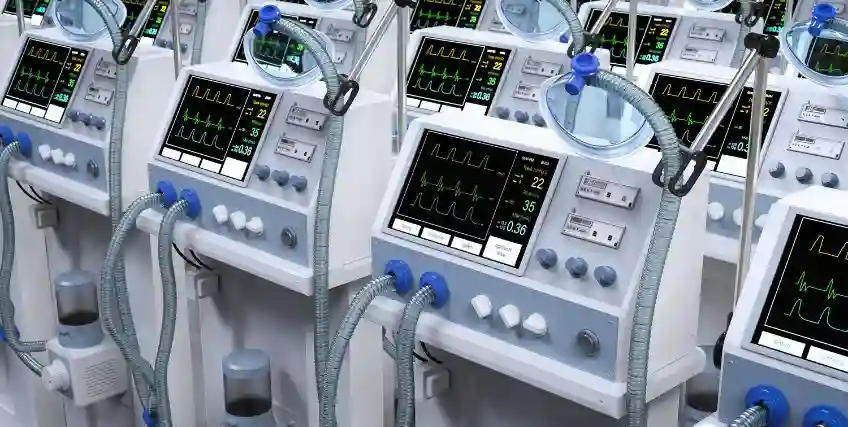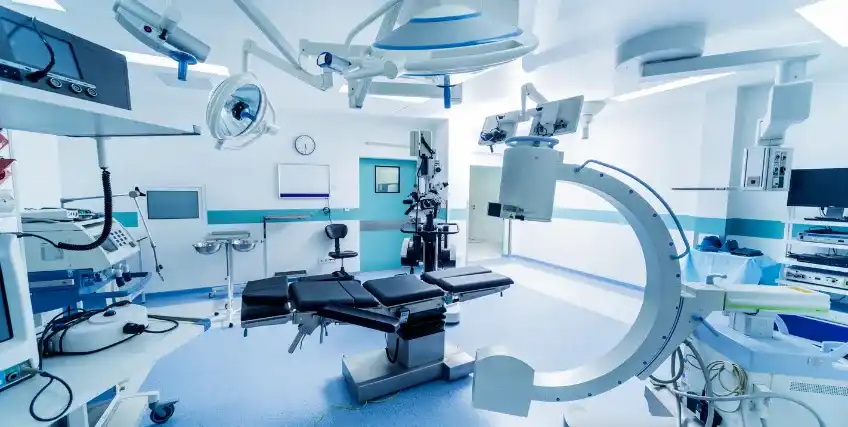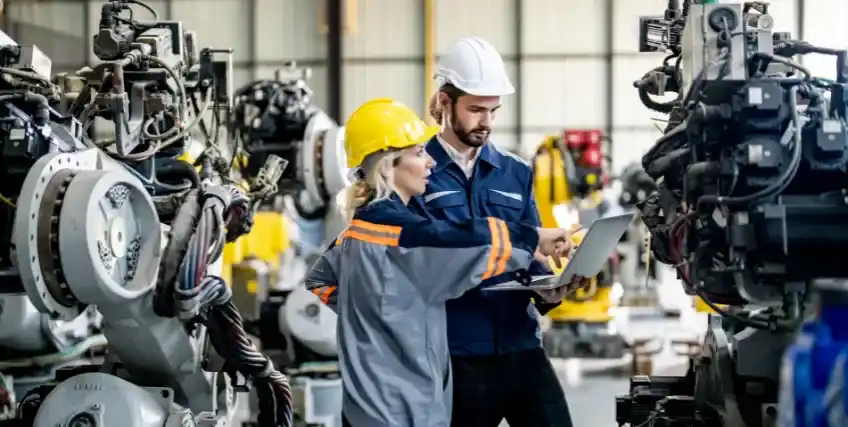Unlock Your Cash Flow: The Advantages of Equipment Financing for Small Businesses
October 29, 2025 | Last Updated on: October 29, 2025

Key Takeaways:
- Discover how equipment financing options help small businesses manage costs and preserve cash flow.
- Learn the difference between equipment loans and equipment leasing.
- Explore practical ways to qualify and choose the right financing for your business.
Owning the right business equipment can make or break how efficiently a small business runs. Yet many business owners hesitate to make equipment purchases because of hefty upfront cost and concern over tying up working capital. For most U.S. small business owners, preserving cash flow is as important as increasing revenue. That's why exploring the full range of equipment financing options matters.
When you choose equipment financing options instead of traditional business loans, you get access to the commercial equipment you need without a heavy upfront burden. You maintain flexibility in how you manage working capital and you can stay competitive in your industry.
In this article, discover how equipment financing is structured, why it may serve many small business owners, and how to evaluate your options for things like equipment leases, equipment loans and startup equipment financing with bad credit.
What Is Equipment Financing?
Equipment financing refers to the financing solutions that allow a business to acquire equipment needed for its operation. It could be anything like construction equipment, healthcare diagnostic machines, restaurant appliances or manufacturing tools. This financing is done through a lender without paying the full purchase price upfront.
Instead of paying the full amount upfront, you make easy monthly payments spread over time. The lender looks at your business needs, the kind of equipment you want to buy, how much money you need, how long you want to repay, and your business and credit history before approving the financing.
There are two primary routes:
- Equipment loans involve borrowing funds to purchase new equipment. With this, the business can take ownership either immediately or after the loan is repaid. With equipment loans, mostly the equipment itself serves as collateral for the loan.
- Equipment leasing, on the other hand, allows a business to use the equipment through regular payments over a set lease term, without purchasing it outright. At the end of the term, there may be an option to buy the equipment, renew the lease, or upgrade to newer models. Equipment leasing is usually common among startups or businesses with seasonal operations.
Advantages of Equipment Financing Options
Here are some of the ways equipment financing options can deliver meaningful advantages for small business owners.
1. Preserve Working Capital and Minimize Up-Front Cost
When you use equipment financing options, you can often acquire business equipment with minimal down payment or none at all. That means you preserve your cash for other business needs like payroll, marketing, inventory, working capital.
When you compare this to a traditional term loan or business loan, those often require a larger upfront cash outlay, and the equipment purchase may compete with other business priorities.
2. Fast Funding Decisions and Asset-backed Structure
A key advantage of equipment financing options is that the asset, the business equipment itself serves as collateral. This often speeds up the underwriting and credit decisions, and can help businesses with weaker credit histories or less annual revenue obtain financing. The equipment lender evaluates the equipment, the business's ability to make monthly payments, and often the remaining useful life of the equipment.
For small business owners concerned with startup equipment financing bad credit, this is a major benefit. This is because the focus shifts away from just the personal credit score and more toward the equipment value and business cash flow.
3. Cash-Flow Friendly Payment Structure and Possible Tax Benefits
Using specialized equipment financing options typically means monthly payments are aligned with the useful life of the equipment. That means your payments are spread out rather than a large up-front cash outlay. That supports steady cash flow.
Moreover, business equipment acquired through financing may offer tax benefits. These tax benefits mean that the effective after-tax cost of using equipment financing options can be lower than just the face value of monthly payments. However, be sure to consult with a tax professional.
By choosing equipment financing options, you align your financial structure with your operational needs, preserve working capital and improve your monthly cash flow profile.
4. Flexibility and Ownership Options
If you decide to pursue equipment financing options, you'll often face a choice between purchasing via a loan or leasing. Each has its own pros and cons.
- With an equipment loan, you own the equipment, after the loan is paid, or as you go and you build equity in the commercial equipment.
- With equipment leasing (especially equipment leasing for startups), you may just pay for use over a lease term, possibly upgrade to new equipment at the end, or decide to buy the equipment with a buy-out clause. The upfront cost is often lower, and monthly payments can be smaller. Because the structure is asset-specific, the lender is more comfortable focusing on the type of equipment, its resale value, and the lease term. That gives flexibility for many business owners who might be hesitant to commit to a large equipment purchase.
When you compare to traditional business loans or business equipment purchases financed through a term loan, you may lose flexibility, and your cash-flow burden may be heavier.
5. Builds Credit, Enhances Financial Strength
When business owners choose equipment financing options and make consistent on-time monthly payments, they build the business credit profile, if the lender reports to credit bureaus. For borrowers with weaker personal credit or just starting the business, this is helpful.
Over time, demonstrating responsible use of asset-specific financing positions a small business for larger lending opportunities such as Small Business Administration (SBA) loans (7(a) or 504) or a business line of credit. According to SBA data, small business financings increased in FY 2024 to over 103,000 approvals. This is one of the highest levels since 2008.
Equipment Financing Options in the U.S.
When exploring equipment financing options, here are some of the best paths and considerations for U.S. small businesses:
- SBA-backed loans: Under the SBA 7(a) and 504 programs, small business owners can finance equipment (with favorable terms and government guarantees).
- Banks and credit unions: Many business banking institutions (FDIC-insured, equal housing lenders) offer equipment loans or loans tied to equipment as collateral. These may provide competitive rates and established processes.
- Online lenders: There are some online lenders that often focus specifically on equipment leasing, equipment loans or used equipment purchase. They may offer faster approval and flexible financing solutions.
- Equipment manufacturer or vendor financing: Some vendors of construction equipment, healthcare machines or manufacturing tools provide financing or leasing arrangements directly or through third-party lenders.
- Used equipment financing: If you're purchasing used or refurbished commercial equipment, there are equipment financing options that cater to that need (though underwriting may be more cautious because equipment value is lower).
Tips to Qualify for Equipment Financing Options
Here's a practical roadmap for business owners who want to pursue equipment financing options:
- Define the business need: Identify the type of equipment you need (commercial equipment, new equipment or used equipment), the vendor quote, estimated cost and annual revenue projection from using that equipment.
- Gather documentation: Provide financial statements, business banking statements, tax returns, list of existing liabilities, and equipment vendor invoice or quote.
- Prepare your credit profile: For borrowers with weaker personal credit (or startup equipment financing bad credit scenarios), highlight business plan, revenue forecast, and the value/usefulness of the equipment.
- Compare lenders and structures: Evaluate equipment loans vs equipment leasing for startups (or small business upgrades). Check down payment requirements, term length, monthly payments, interest rates, and fees.
- Review financing agreement and disclosures: Read the contract carefully, like origination fees, lease-buyout options, residual value, ownership at end of term, penalties, and all disclosures.
- Understand tax and accounting implications: Confirm how the equipment will be depreciated or expensed and how monthly payments affect your cash flow and working capital.
- Apply and manage the payments: Submit the application, allow for credit approval, and once approved, monitor monthly payments and maintain timely payment record to build credit.
Conclusion
For small business owners, choosing between a general business loan and equipment financing is an important decision. If you're buying, upgrading, or replacing equipment, equipment financing can help you preserve cash flow, get faster approvals, and match payments to your business needs.
It's a good option for startups or companies in industries like construction, healthcare, or manufacturing. Before you commit, review the down payment, interest rate, and repayment terms carefully. With the right equipment financing plan, you can stay competitive, scale efficiently, and manage monthly costs to support growth.
FAQs About Equipment Financing Options
1. What is the difference between equipment leasing for startups and equipment loans?
Equipment leasing for startups allows a business to use the equipment with smaller monthly payments and lower upfront cost. Ownership usually stays with the lender or leasing company until the end of the lease term, where a buy-out option may exist. An equipment loan means the business borrows funds to purchase the equipment and owns it (or will own it) from the start.
2. Can I obtain startup equipment financing with bad credit?
Many equipment financing options are structured so that the equipment value and business plan take more weight than just the personal credit score. The lender may look at the type of equipment, expected cash flows from that asset, and deposit a minimal down payment.
3. What are typical interest rates or monthly payments for the best equipment financing?
Interest rates and payment terms for equipment financing can vary widely depending on factors such as the equipment's cost, the borrower's credit profile, the length of the loan or lease, and the type of asset being financed. In general, lenders determine pricing based on the risk profile of the business and the useful life of the equipment. Because the equipment itself serves as collateral, equipment financing often provides more competitive terms than unsecured business loans or credit cards. Monthly payments are typically structured to align with the equipment's expected lifespan and the business's cash flow, helping to balance affordability and financial stability.
4. How long does the application process take for equipment financing options?
The application and approval process for equipment financing is often quicker than that of many traditional business loans. Since these loans are typically secured by the equipment itself, the lender's review focuses more on the asset's value and the business's ability to manage the payments, making underwriting more straightforward.
5. Are payments tax-deductible under Section 179 or bonus depreciation when using equipment financing options?
If you purchase the equipment (via loan) and place it in service, the equipment cost may be eligible for Section 179 deduction or bonus depreciation, which reduces taxable income. If you lease equipment, the lease payments may be fully tax-deductible as business expenses, for the portion that represents usage. You should consult your tax advisor to understand how your equipment financing agreement and term influence your depreciation and deduction strategy.
Frequent searches leading to this page
Related Articles
Hidden Benefits of Business Equipment Financing You Might Not Know About
December 12, 2025
How to Choose the Right Equipment Financing Company for Your Small Business
December 10, 2025
Tips to Qualify for Commercial Equipment Finance With Limited Credit or Short Business History
November 24, 2025
Term Loans are made by Itria Ventures LLC or Cross River Bank, Member FDIC. This is not a deposit product. California residents: Itria Ventures LLC is licensed by the Department of Financial Protection and Innovation. Loans are made or arranged pursuant to California Financing Law License # 60DBO-35839




